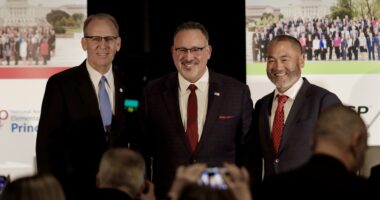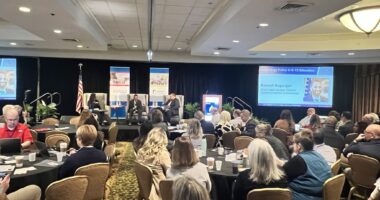Building Instructional Leadership Capacity
The principalship is filled with great excitement and daily rewards. We know we can make an impact every day, from shaping student learning to interacting with stakeholders. Yet surveys and articles have recently put a spotlight on the decline in principal retention. Principals often report feeling isolated and lacking support, time, and work-life balance. The message being sent to teacher leaders is that the principalship is too complex—its goals are unattainable and the workload is never-ending.
Speakers: Ann Cunningham-Morris & Deborah Childs-Bowen
Key takeaway: Strong principal leaders have clear vision, give instructional leadership, learn, and collaborate.
Why do so many principals leave the field? Extensive research on educational leadership tells us that keeping the same leader in a school while providing him or her with rich and ongoing professional development has a significant impact on student achievement. Perhaps this could be the solution to principal retention and consistency in school leaders.
Differentiated Learning
When we look at instructional leaders, we often find that the professional development they are given is focused on initiatives rather than strategies that will help their schools. At times, these initiatives do not align with the needs of the school, resulting in lack of support from the staff while creating initiative fatigue.
What schools need is leadership development that focuses on strategies that will monitor and measure resources. Leaders should have professional learning that is differentiated to their schools’ needs. Principals need support in how to coach teachers, support professional communities, and sustain the implementation of effective instructional and assessment practices.
Principals who successfully move schools forward possess these four key leadership components:
- Clear vision.
- Instructional leadership.
- Engagement.
- Learning and Collaborating.
Reflection plays an important part in a principal’s success. Principals must be intentional about this. We must ask ourselves if initiatives, protocols, activities, and professional learning support the goals established for the school.
Intentions and Mission
Districts must prioritize and believe in the importance of principal growth. Just like students will not learn from people they do not like, teachers will not follow a leader who does not believe in the system being implemented. Reiterating the mission and vision of the school will allow principals to lead fiercely with a focus on the specific needs of their school.
This does not come easily. One must be willing to look in the mirror and deeply reflect on current practices and how these have impacted students and the culture of the school. It is only by engaging in authentic reflection that leaders will be able to align their intentions with the mission and vision of the school. While a principal wears many hats, our primary job is to be a positive influence to all stakeholders. The Principal Influence is a great resource that offers school leaders a framework for developing leadership capacity.
Being open about our shortcomings while allowing ourselves to be adaptive to the change growth brings is crucial. Schools that embrace the professional learning communities model understand that growth and collaboration is not a skill developed overnight. It can’t be copied from another school building. Because professional development must be aligned with the needs of leaders and their school goals, what’s successful in another school will not always be successful in another. The goal should be to be aware of our current state and use that to take action.
Lynmara Colon is principal of Mary Williams Elementary School in Dumfries, Virginia.




